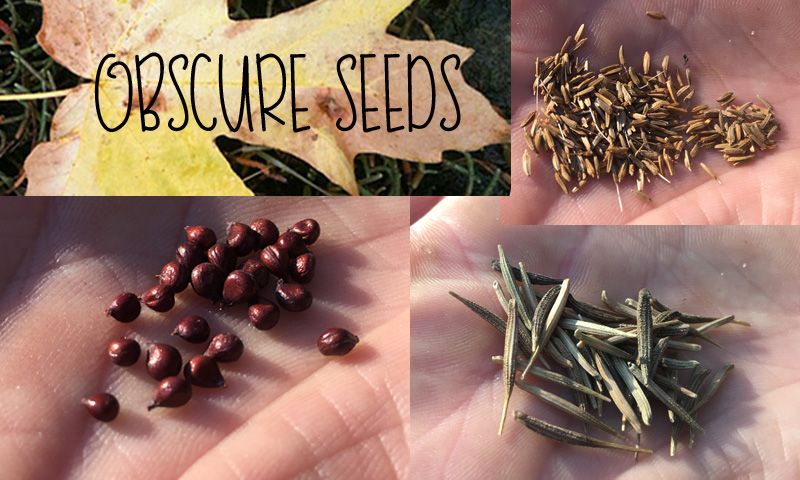
Ah the wonders of genetic heritage from around the world!
Back in December, I blogged about a visit I made to our local Ozark Seed Bank. I help out there and in exchange, I can take seeds, do seed germination % trials and give them back to the bank. In this way, I'm getting access to rare and unusual seeds from around the world while also helping out a worthy cause in refreshing the seed bank.
Here are 4 Obscure Seeds I started soaking tonight and will plant tomorrow in the high tunnel.
I'm interested if any of you from other countries (especially European), find these plants completely mundane. I know at least a couple of them are thought of as normal fare there. Curious for your feedback.
Tragopogon porrifolius or Salsify
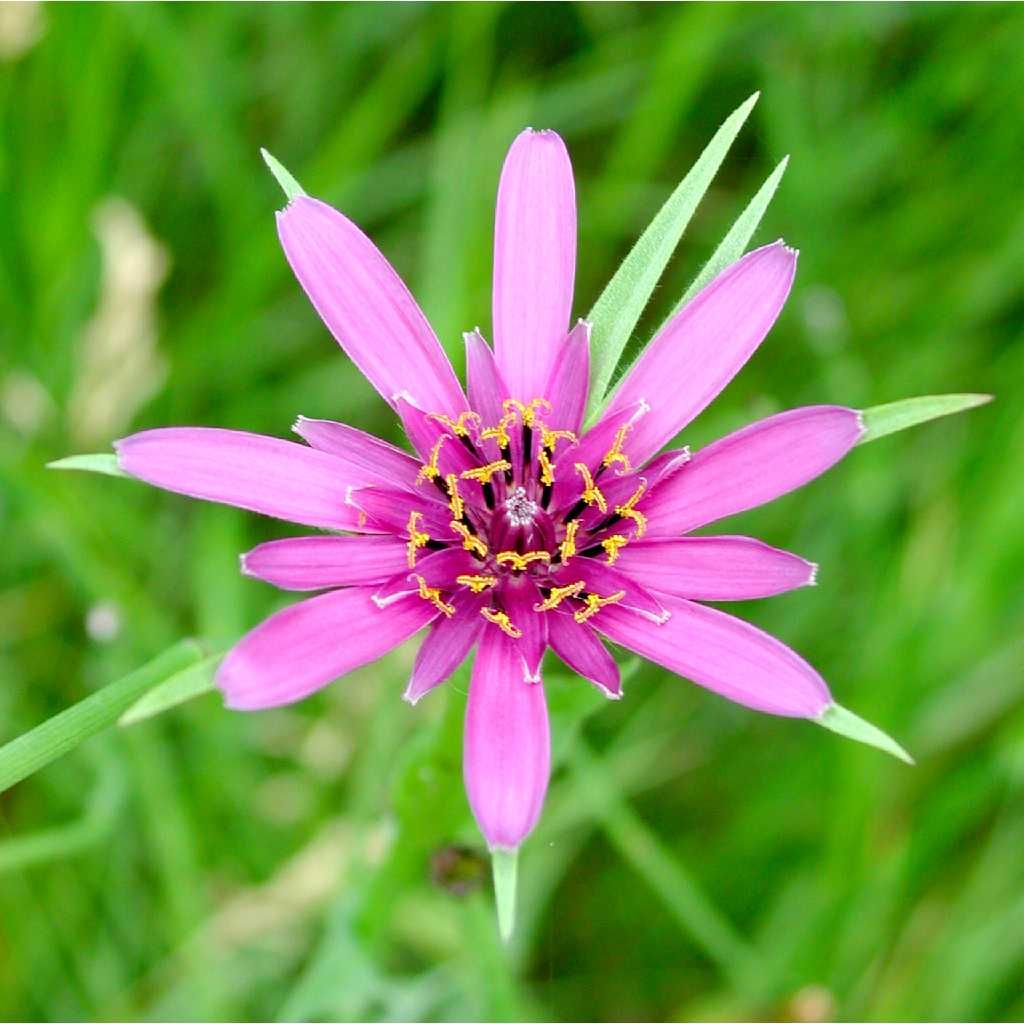 (source)
(source)
Salsify
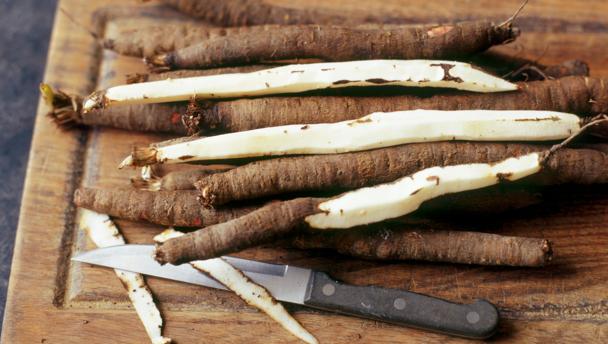 (source)
(source)
A member of the dandelion family, salsify is a plant that used to be much more common (in Europe), though it slowly fell to the wayside as the carrot rose in fame.
Barbara Damrosch of 4 Seasons Farm in Maine says,
You’re going to have to trust me about salsify. This is a white root — rather like a parsnip but skinnier — that keeps beautifully in the ground. Like the parsnip, it’s planted in spring, as early as the ground can be worked, then allowed to grow all summer and fall until the first frosts bring out its flavor. You can then pull it up during thaws, saving some under refrigeration if you like, but it will shrivel a little and is best dug and eaten fresh.
And I'll trust her! I spent a few months one summer farming with her and Eliot and they know their veggies! She goes on to say,
The most surprising thing about salsify, the first time you eat it, is its flavor. Traditionally it is called “oyster plant,” a name as inaccurate as it is unappetizing. The roots taste nothing like oysters, and nothing like parsnips either. They taste like artichoke hearts — unlike the so-called Jerusalem artichokes that are said to taste like artichokes but don’t.
I put 70 seeds in water this afternoon to get them a little boost for planting. They are quite old, after all, from sitting in the seed bank. Soaking seeds overnight before you plant helps to wake them up!

Taraxacum officinale - Dandelion montagny
 (source)
(source)
Next up is a plant we're likely all familiar with, but in a cultivated form. Yes people have cultivated dandelion for years to get a perfect sized root and leaves!This particular cultivar is the French Dandelion or Vert de Montagny.
"This is an early maturing and productive variety with broad, dark green leaves and a relatively mild flavor compared to some other varieties" (source).
Of course, your native and pernicious dandelions are also a readily available food source often growing in your yard (just make sure they haven't been sprayed!). The leaves are delicious and very good for you! They'll stimulate digestion and act as a tonic in spring to cleanse the system from winter's stagnation. The roots are incredibly medicinal and likewise aid in digestion and also support and strengthen the liver. They also can be used as very tasty alternative to your morning cuppa.
Here is a dandy French love-note to the dandiest of spring greens,
The name “dandelion” comes from the French for “dent de lion,” or the Italian “denti di leone,” both of which mean “the lion’s tooth,” a reference to their jagged edges. Healers have used them for centuries because dandelions are renowned for supporting healthy liver function and are packed with calcium, iron, fiber, vitamins A, C, E and K and powerful antioxidants such as beta-carotene and lutein (great for healthy eyesight!). The dandelion is also a powerful diuretic (in French it’s also known as "pissenlit," an unglamorous but straightforward nod to bedwetting).
Dandelions are at most tender and most delicious in spring. After winter’s last snow melted in our town near the Alps, my father-in-law would start his own annual rite of spring: collecting the best dandelion leaves in the garden for lunchtime salads. The leaves are still quite small in the early days of spring, so it was definitely a labor of love. Rustling up enough for a big salad was a real time commitment!
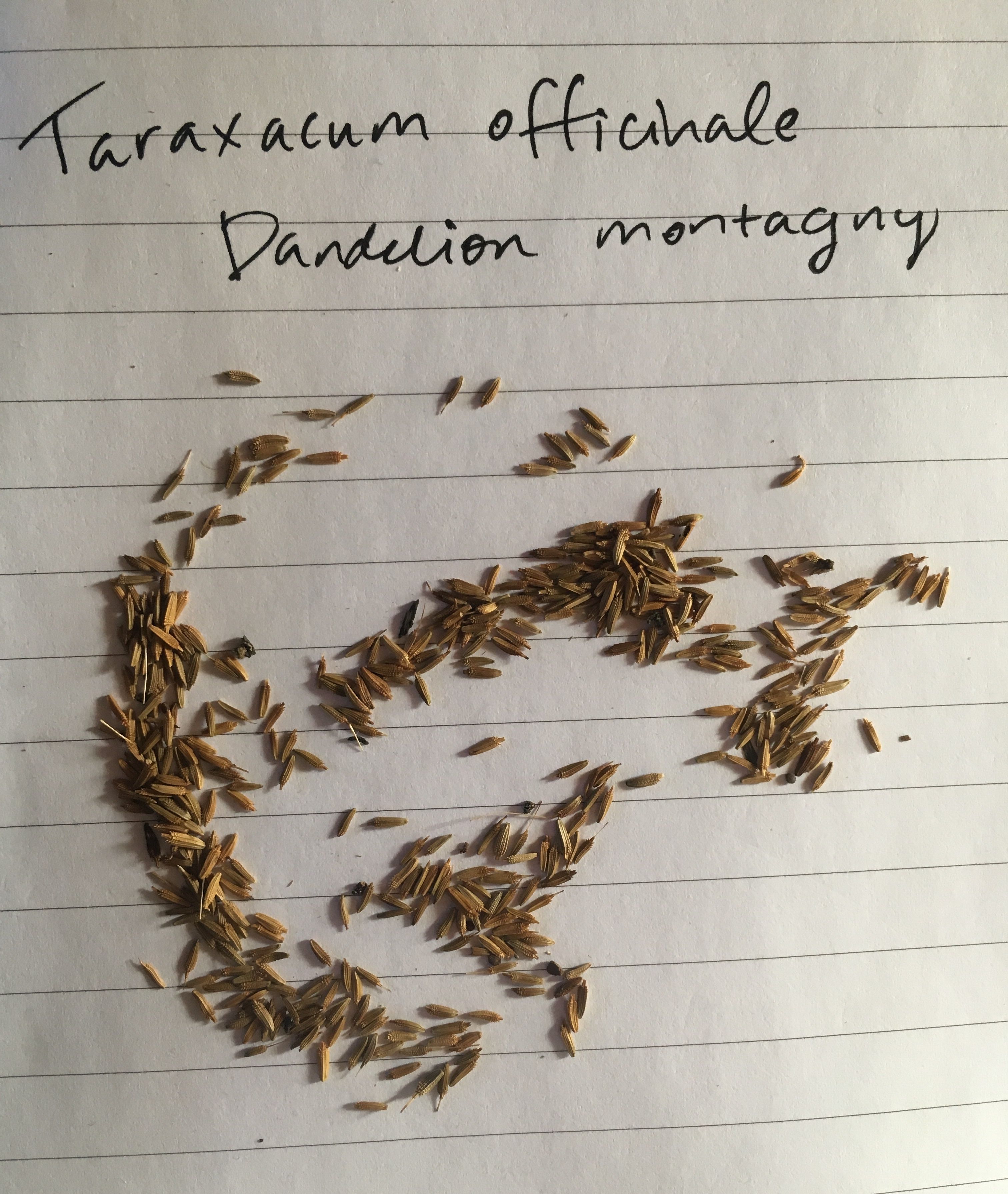.jpeg)
Crambe maritima or Sea Kale
Now if you haven't heard of this one yet, don't turn away! This is what Baker Creek Seeds has to say,
Commonly found growing along the famous shingle beaches in England, locals would cover the emerging shoots to blanch them like asparagus. Sailors would pickle the greens, which are naturally high in Vitamin C, for long sea voyages as a scurvy preventative, hence the nickname scurvy grass. This hardy brassica is perennial to about U.S zone 5, the large tap roots remaining dormant in ground until spring. Until its recent re-discovery by temperate, permaculture gardeners as the perfect perennial green, Sea Kale was considered an arcane vegetable. Thanks to its drought and salt tolerance, nectar rich flowers for feeding the pollinators and culinary versatility, Sea Kale is poised to rise to the top of every gardeners must have list. RARE, hard-to-find, expensive seed, but is a perennial and long lasting plant.
A few other glowing reports ! http://www.eattheweeds.com/sea-kale/ & http://tcpermaculture.com/site/2014/03/03/permaculture-plants-sea-kale/
I'm really excited to get quite a few of these babes on the homestead. The perfect permaculture plant, wow! ;)
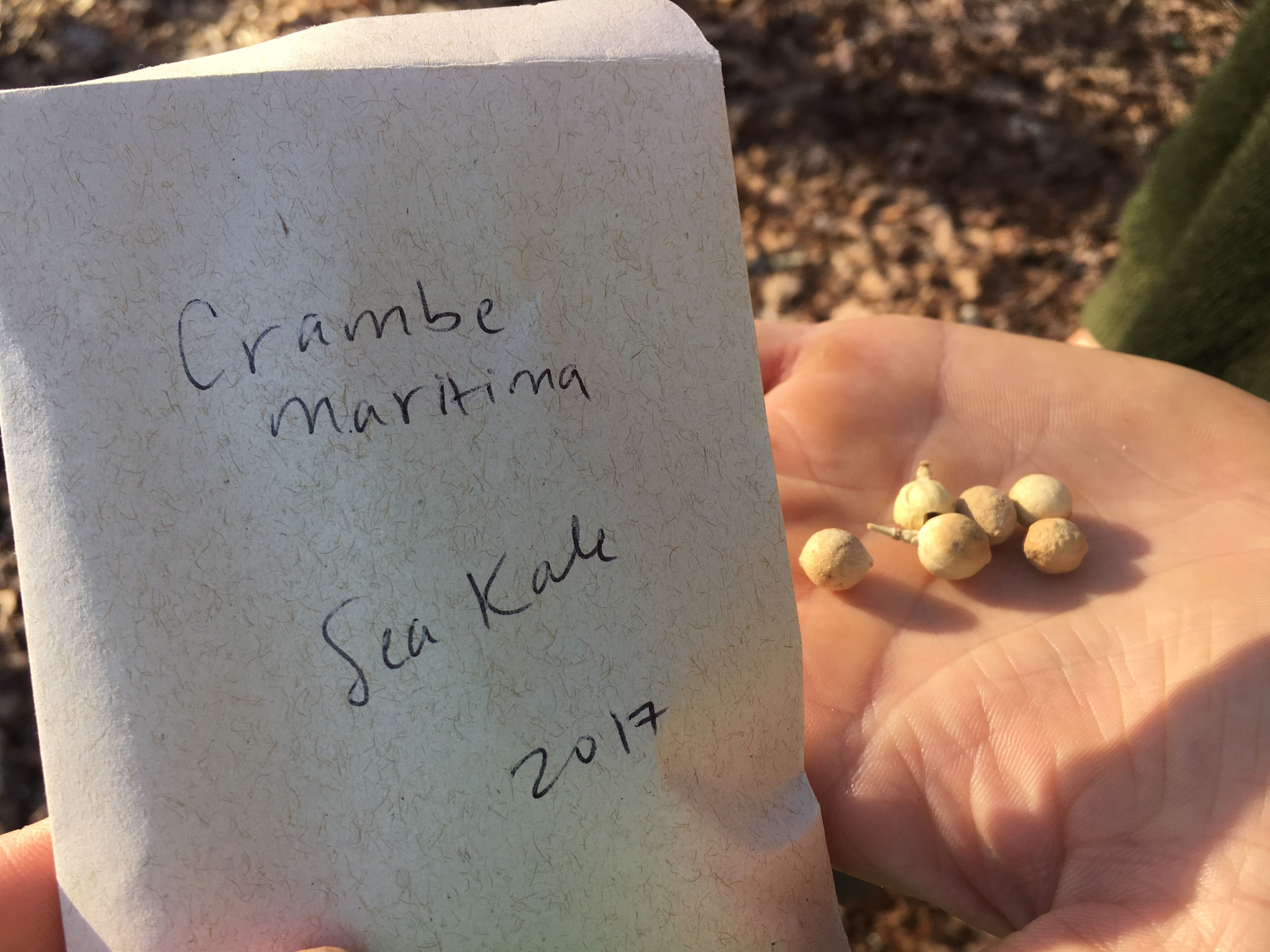
Honckenya peploides or Sea Chickweed
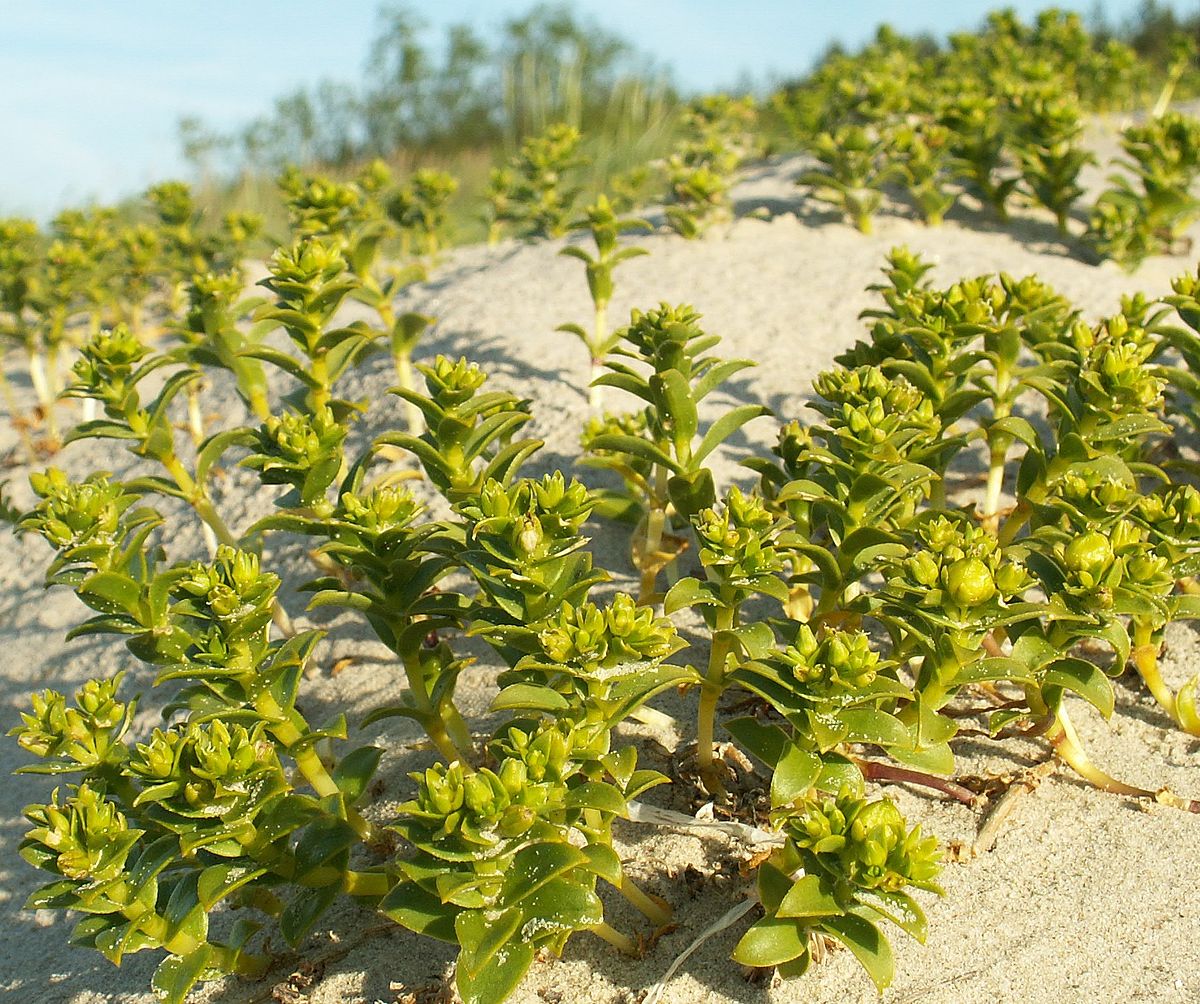 (source)
(source)
Now this one, I had never heard of, but I am a huge fan of our native chickweed (stellaria media) and though these two aren't related, it got my foot in the door.
According to it's wiki page,
Both the leaves and the seeds of H. peploides are used as food. The shoots and leaves are rich in vitamin A and vitamin C and can be used as a green leafy vegetable either raw or cooked. They can also be fermented to prepare a sauerkraut-like preserve, and in Iceland are fermented in whey to produce a drink. The seeds are small in size and time-consuming to gather; they can be ground up and added to flour or used as a garnish.
Obviously I wont be growing it next to the sea, but I do hope it can naturalize and find a spot it loves on the homestead.
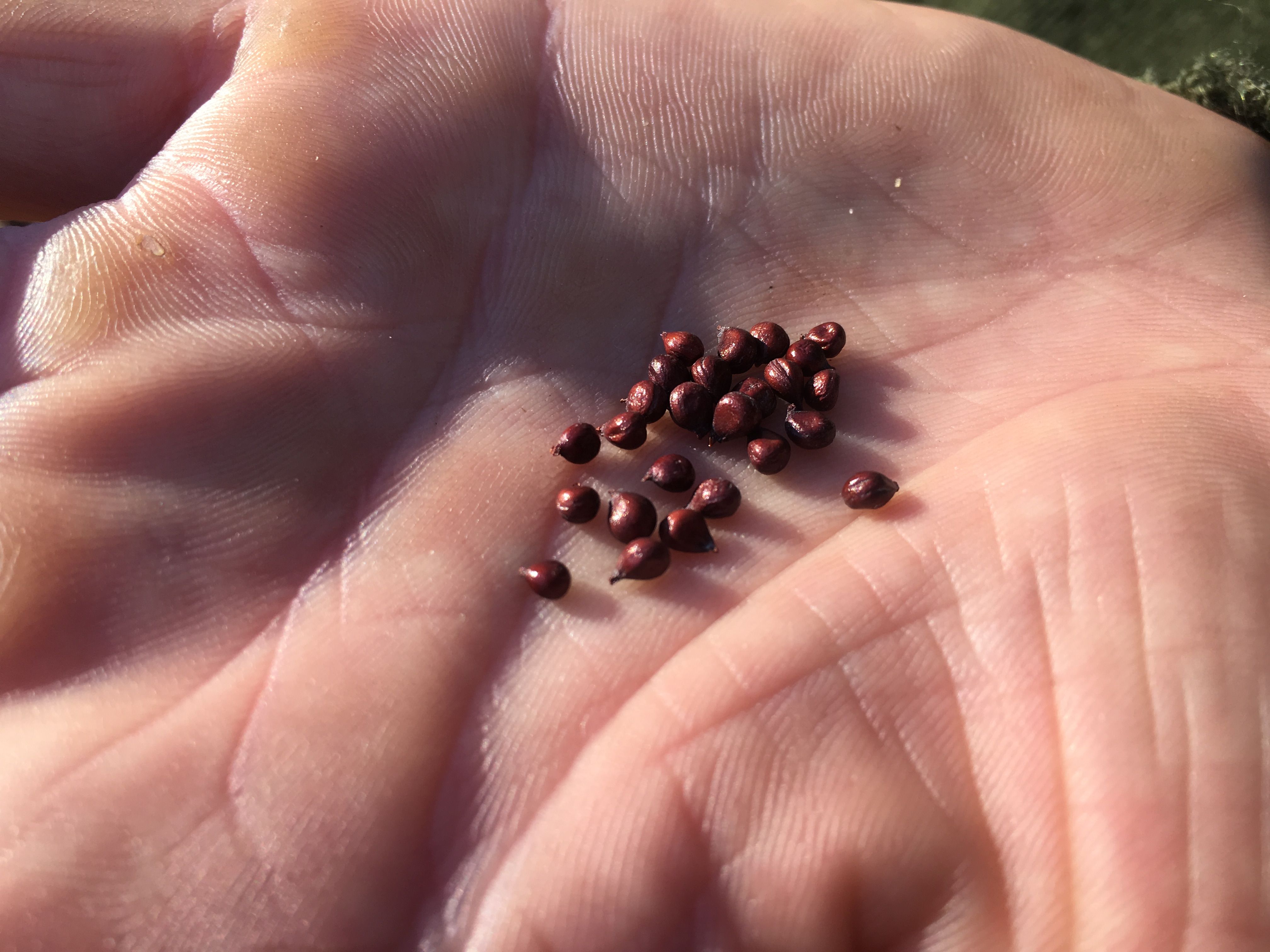
One of my passions is finding obscure and forgotten plants. Perhaps they already had their hayday with humans and now they're drifting off into virtual non existence.
I'm excited about plants like these, so expect to see more from @mountainjewel! I'll keep you posted how the germination rates are and if these plants are easy to grow (especially Sea Kale and Sea Chickweed as I'm pretty sure the first two will be easy peasy :)).
What are some rare or unusual plants that you grow that you're super excited about?

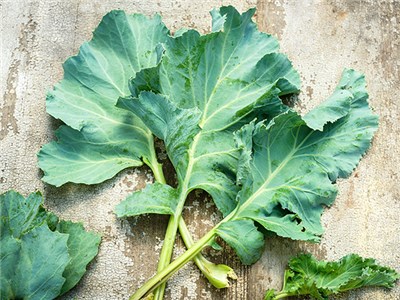 (
(